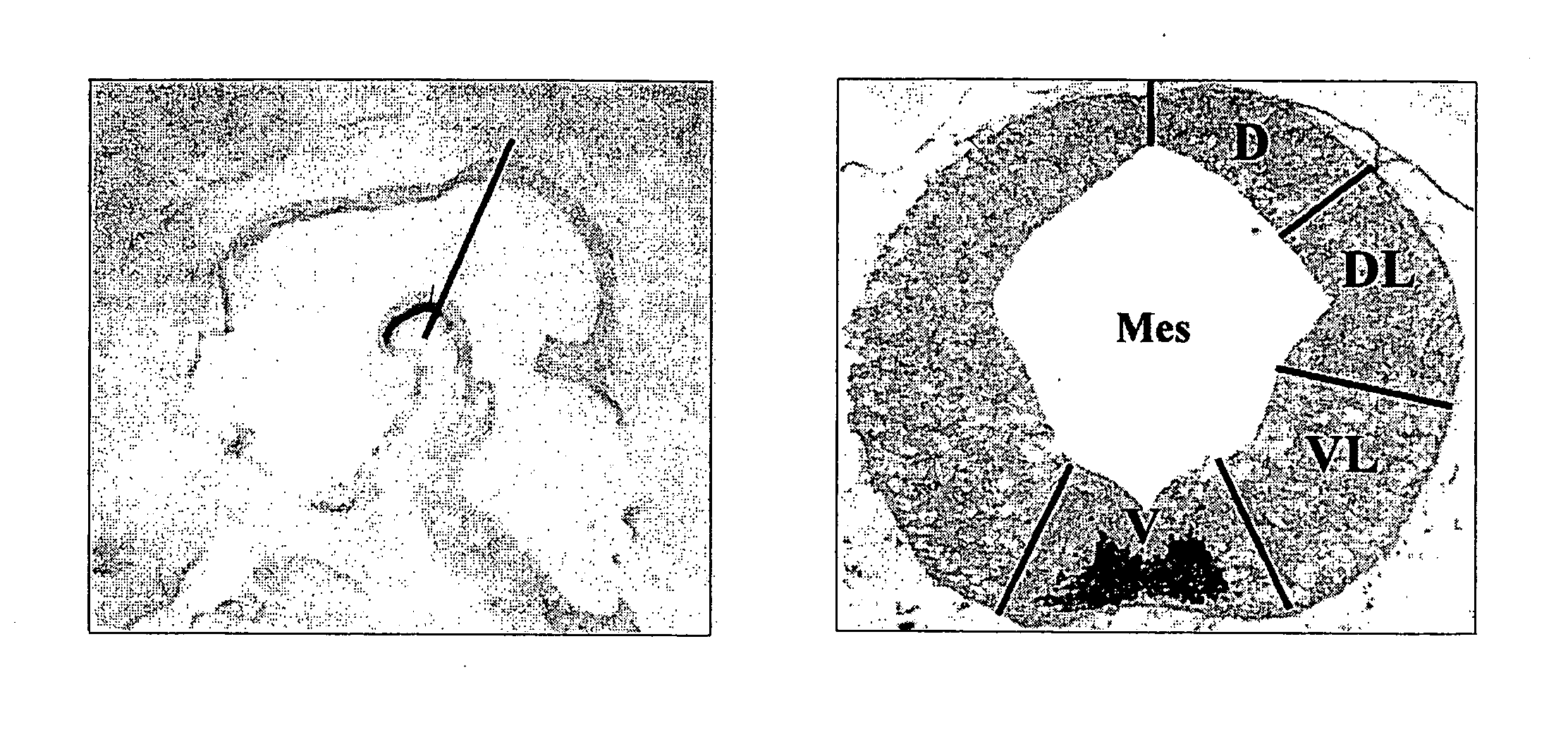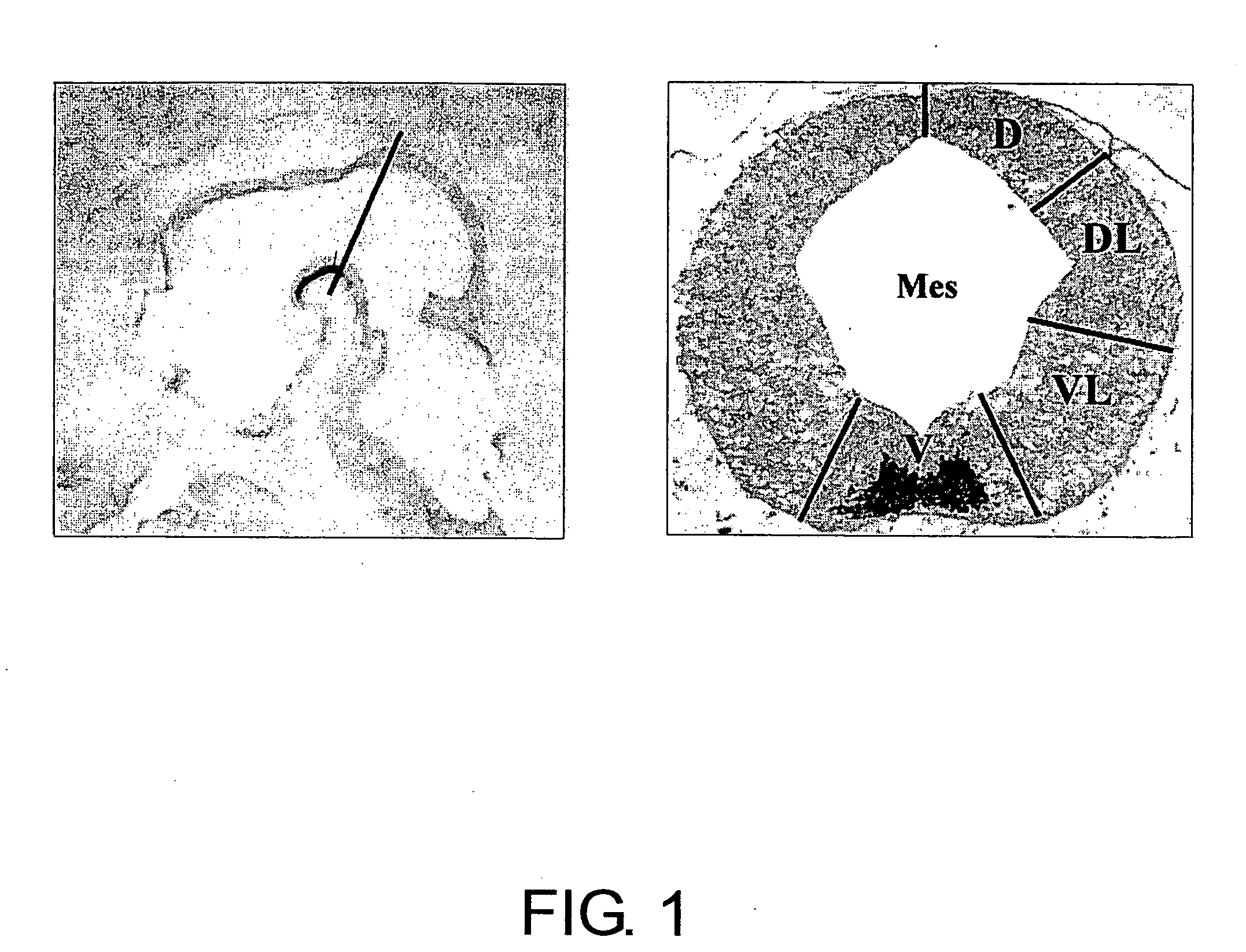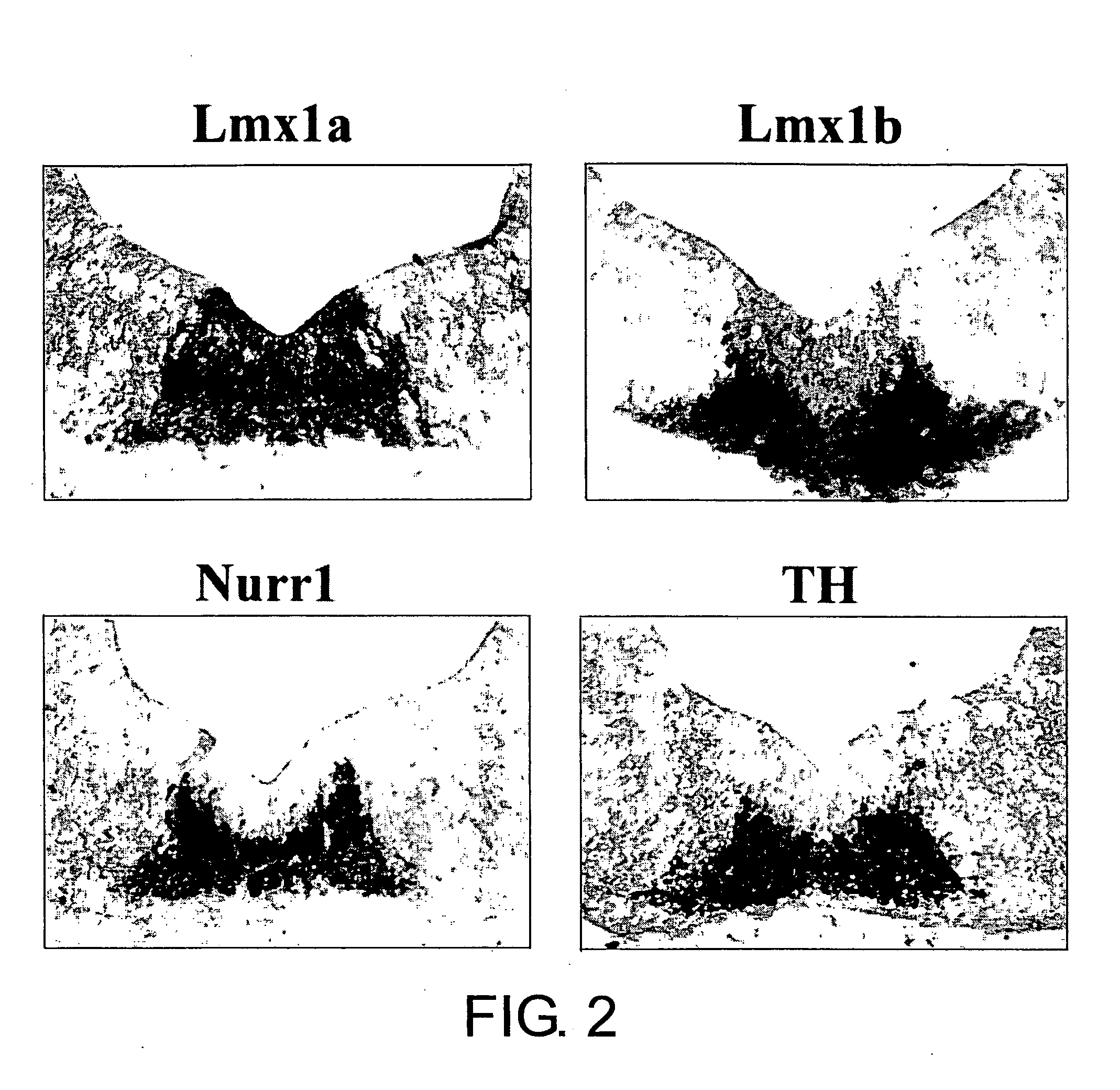Specific Marker Lmx1a on Dopaminergic Neurons
a dopaminergic and gene-specific technology, applied in the field of lmx1a genes, can solve the problems of unsatisfactory effect duration, risk of infection and contamination, and affecting cell supply and ethics, and achieve the effect of effective marker
- Summary
- Abstract
- Description
- Claims
- Application Information
AI Technical Summary
Benefits of technology
Problems solved by technology
Method used
Image
Examples
example 1
Isolation and Sequence Analysis of a Gene Specific to Dopaminergic Neuron Progenitor Cells
[0165] To isolate a gene specific to dopaminergic neuron progenitor cells, the midbrain ventral region of E12.5 mice was cut into two regions in the dorsoventral direction, and genes specifically expressed in the most ventral region containing dopaminergic neurons were identified by the subtraction (N-RDA) method. One of the isolated cDNA fragments was a fragment encoding Lmx1a. Lmx1a encodes a protein comprising a LIM domain and a homeodomain.
1 N-RDA Method
1-1. Adapter Preparation
[0166] The following oligonucleotides were annealed to each other, and prepared at 100 μM: (ad2: ad2S+ad2A, ad3: ad3S+ad3A, ad4: ad4S+ad4A, ad5: ad5S+ad5A, ad13: ad13S+ad13A)
ad2S:cagctccacaacctacatcattccgt(SEQ ID NO: 1)ad2A:acggaatgatgt(SEQ ID NO: 2)ad3S:gtccatcttctctctgagactctggt(SEQ ID NO: 3)ad3A:accagagtctca(SEQ ID NO: 4)ad4S:ctgatgggtgtcttctgtgagtgtgt(SEQ ID NO: 5)ad4A:acacactcacag(SEQ ID NO: 6)ad5S:ccagca...
example 2
Expression Analysis of Lmx1a
[0177] 1. To confirm the expression of Lmx1a in dopaminergic neurons, expression analyses of Lmx1a, Lmx1b, Nurr1, and tyrosine hydroxylase (TH) mRNAs by in situ hybridization were carried out according to the following protocol: Nurr1 and TH are markers whose expression is known to be induced for the first time in dopaminergic neuron progenitor cells after cell cycle exit. Lmx1b is a transcription factor marker known to be expressed at an extremely low level at the stage of proliferating progenitor cells, but its expression starts to increase to a high level after cell cycle exit.
[0178] First, E12.5 mouse embryos were extracted, fixed in 4% PFA / PBS (−) at 4° C. for two hours, exchanged with 20% sucrose / PBS (−) at 4° C. overnight, and embedded in O.C.T. Sections of 12 μm thickness were prepared and after drying on a slide glass, the sections were fixed again in 4% PFA at room temperature for 30 minutes. After washing with PBS, hybridization was carried o...
PUM
| Property | Measurement | Unit |
|---|---|---|
| temperature | aaaaa | aaaaa |
| temperature | aaaaa | aaaaa |
| temperature | aaaaa | aaaaa |
Abstract
Description
Claims
Application Information
 Login to View More
Login to View More - R&D
- Intellectual Property
- Life Sciences
- Materials
- Tech Scout
- Unparalleled Data Quality
- Higher Quality Content
- 60% Fewer Hallucinations
Browse by: Latest US Patents, China's latest patents, Technical Efficacy Thesaurus, Application Domain, Technology Topic, Popular Technical Reports.
© 2025 PatSnap. All rights reserved.Legal|Privacy policy|Modern Slavery Act Transparency Statement|Sitemap|About US| Contact US: help@patsnap.com



